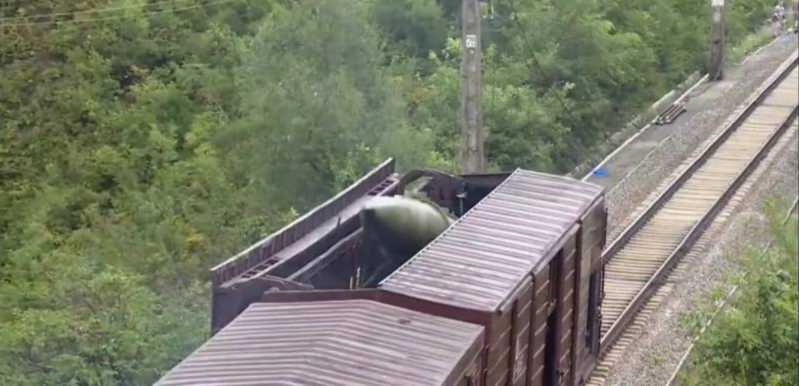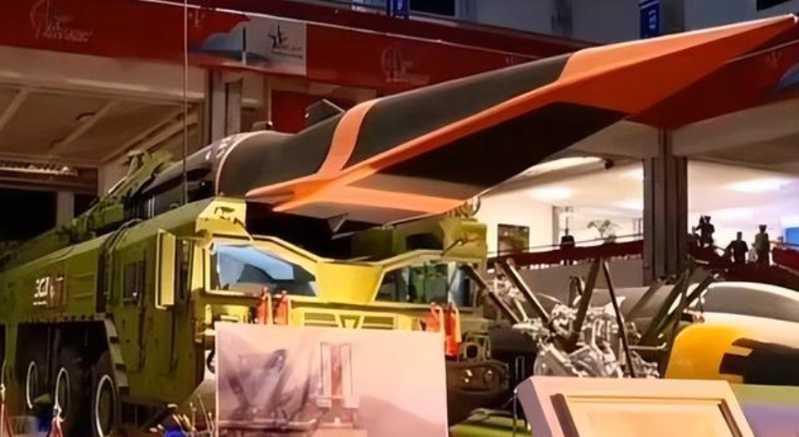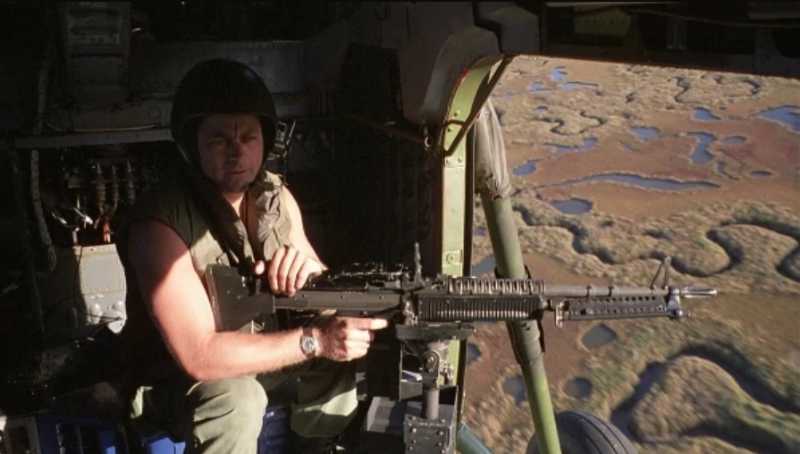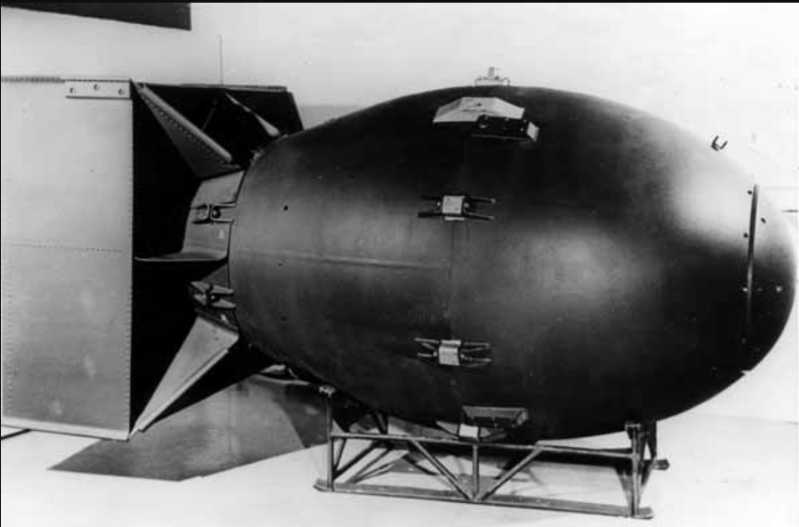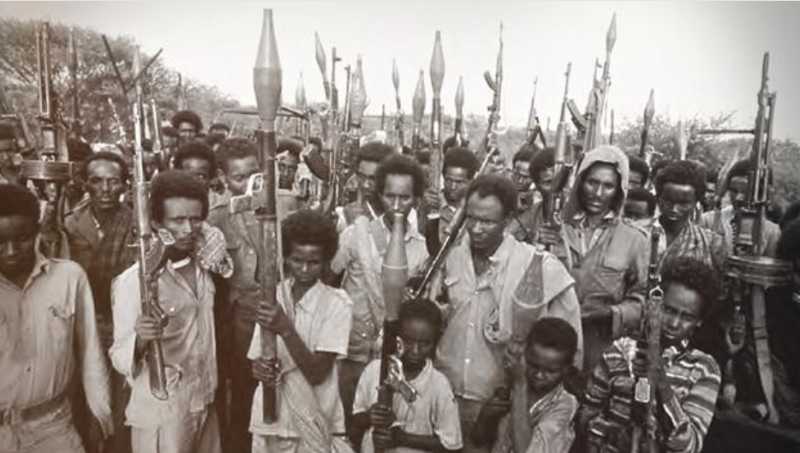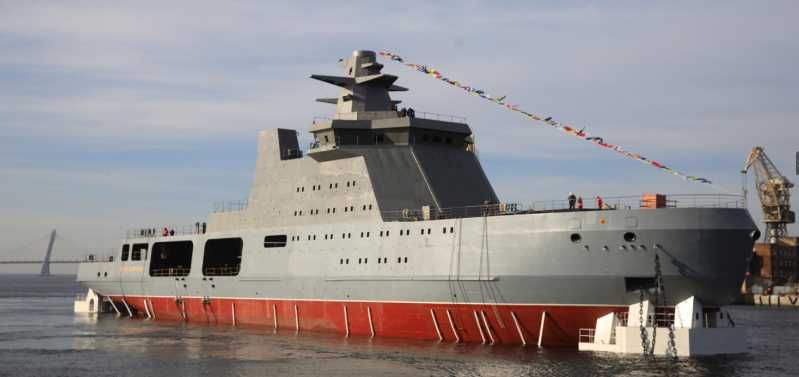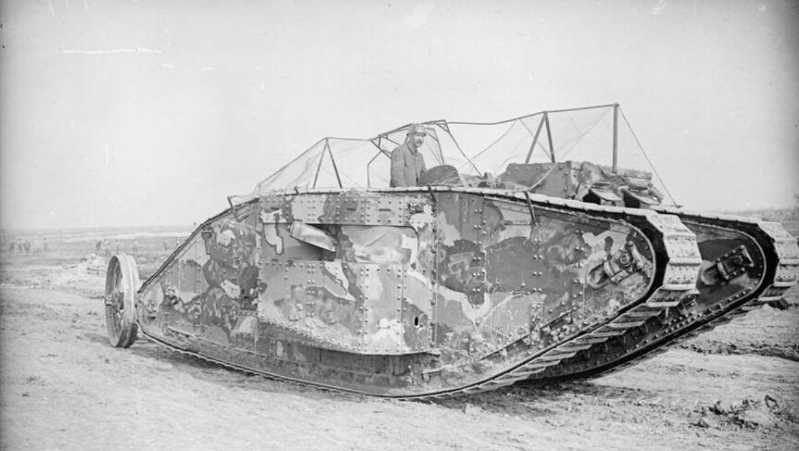From January 6 to 13, 2022, at the invitation of Kazakh President Tokayev, the CSTO peacekeeping force led by Russia launched a lightning strike, cut off the black hands of domestic and foreign terrorist forces attempting to subvert and overthrow the Kazakh regime, quelled the violence and terrorism, and restored the normal social order of Kazakhstan. The 7-day quelling terrorist operation was ostensibly a joint action of the CSTO, but in fact it was a combat version of Russia’s own exercise.
Combat composition of the Russian peacekeeping force
The Russian peacekeeping force is mainly composed of the Russian airborne troops and the military transport aviation of the Aerospace Forces.
Because of its rapid response and mobile combat capabilities to defend the country’s territory and national interests, as well as the personal safety of Russian citizens at any time in the five major war zones of Russia and overseas, the Russian airborne troops have always played the role of the Russian Supreme Commander-in-Chief’s reserve. The so-called reserve refers to a mobile rapid reaction force that directly accepts the command of the Russian Supreme Commander-in-Chief in wartime.
As of December 31, 2021, the Russian airborne force has 46,000 personnel in 4 divisions, 4 brigades and 2 regiments.
The 4 divisions are the 76th Guards Parachute Assault Division (based in Pskov); the 7th Guards Parachute Assault Division (mountain warfare. Based in Novorossiysk); the 98th Guards Airborne Division (mountain warfare. Based in Ivanovo); and the 106th Guards Airborne Division (based in Tula). The four brigades are the 11th Independent Guards Airborne Brigade (based in Ulan-Ude); the 45th Independent Guards Special Brigade (based in Kubinka, Moscow); the 31st Guards Parachute Assault Brigade (based in Ulyanovsk); and the 83rd Independent Guards Airborne Brigade (based in Ussuriysk). The two regiments are the 56th Independent Guards Parachute Assault Regiment (based in Feodosia) and the 38th Independent Guards Communications Regiment (based in Lake Medvezh, Moscow Oblast). In addition, the Russian airborne forces also have a combat personnel training center.
The Russian airborne assault division is equipped with 41 T-72B3 tanks, 21 2S25 "Vampire" SD self-propelled anti-tank guns, 350 BMD-2/BMD-4 airborne combat vehicles, 162 BTR-D/BTR-MDM airborne armored transport vehicles, 72 2S9 "Nona" S self-propelled mortars, and dozens of fire control, communication and command vehicles.
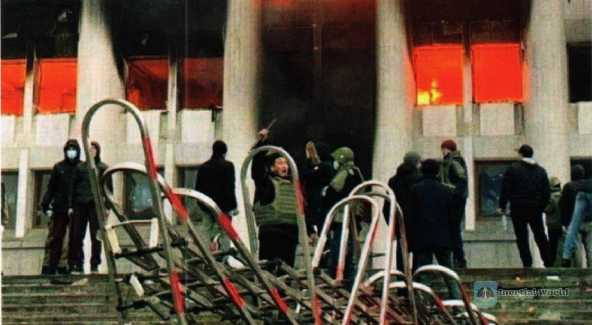
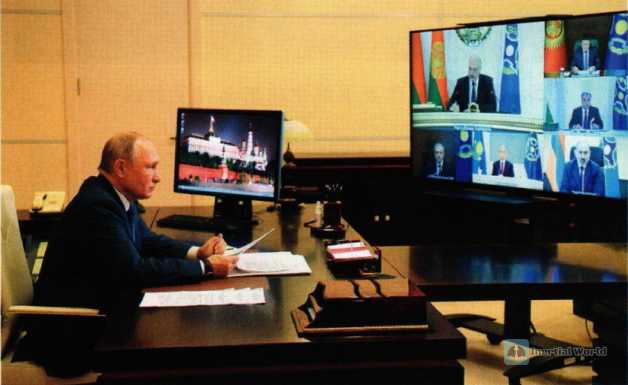
On June 10, 2013, in order to carry out the peacekeeping missions of the United Nations and the CSTO, the Russian Airborne Forces formed the first peacekeeping brigade based on the 31st Guards Parachute Assault Brigade. Before September 1, 2013, the Russian Airborne Forces formed a peacekeeping battalion in the 76th Guards Parachute Assault Division, the 7th Guards Parachute Assault Division, the 98th Guards Airborne Division and the 106th Guards Airborne Division. Subsequently, the Russian Airborne Forces formed peacekeeping battalions in the 56th Independent Guards Parachute Assault Regiment and the 45th Special Brigade. Unlike the Russian airborne troops, the Russian airborne peacekeeping forces are all composed of contract soldiers. At the same time, the Russian airborne troops have established a deputy commander position specifically responsible for peacekeeping forces and coordination with the CSTO. In addition, the Russian airborne command has also established a peacekeeping combat command organization.
The peacekeeping battalion of the Russian airborne troops will participate in various military exercises of the CSTO within the framework of the CSTO combat response force. The purpose of the Russian airborne troops to establish a peacekeeping force is: first, to enhance the pertinence and professionalism of the airborne troops in carrying out anti-terrorism combat tasks, which is conducive to the long-term and healthy development of the airborne troops. Second, to strengthen and improve the wartime mobility and rapid response capabilities of the airborne troops. It is particularly pointed out here that the 31st Guards Independent Parachute Assault Brigade of the Russian Airborne Forces is located in Ulyanovsk at the junction of the Eurasian continent. It is closest to the CSTO member states-Kazakhstan, Tajikistan and Uzbekistan, and can respond to violent terrorist incidents in the CSTO member states in Central Asia at any time.

The Russian Aerospace Forces military transport aviation (the 61st Air Force Group of the Supreme Command) is mainly responsible for parachuting combat airborne troops and combat tactical airborne troops (detachments), transporting weapons, ammunition and supplies to the enemy’s rear; ensuring the mobility of aviation formations and troops, transporting troops, weapons, ammunition and supplies, evacuating the wounded and sick, and participating in peacekeeping operations at home and abroad. In addition, the Russian military transport aviation also undertakes special operations missions.
As of December 31, 2020, the Russian military transport aviation has 5 transport aviation divisions and 24 transport aviation regiments under its jurisdiction.
The 5 divisions are the 3rd Guards Military Transport Aviation Division: the 6th Guards Military Transport Aviation Division; the 7th Guards Military Transport Aviation Division; the 12th Guards Military Transport Aviation Division; and the 18th Guards Military Transport Aviation Division. In addition, the Russian Military Transport Aviation also has a combat use and training center.
The Russian Military Transport Aviation is equipped with a total of 250 Il-76 series and An-124, An-22, An-12 and An-26 military transport aircraft, including 120 Il-76, Il-76MD, Il-76MDM, Il-76MD-90A and 16 An-124 large military transport aircraft. In addition, it is also equipped with dozens of "Sea Eagle" 10 unmanned reconnaissance aircraft.
Based on the out-of-control domestic situation in Kazakhstan, on the morning of January 6, 2022, Kazakh President Tokayev formally sent a request for help to the CSTO. On the same day, the CSTO Collective Security Council held an emergency meeting and passed a resolution to send CSTO peacekeeping forces to Kazakhstan. According to the order of Russian President Putin, the Russian General Staff decided to send a detachment composed of the 76th Guards Parachute Assault Division, the 45th Independent Special Brigade, the 98th Guards Airborne Division and the 31st Guards Independent Parachute Assault Brigade to rush to the terrorist-hit areas in Kazakhstan to carry out peacekeeping missions. In addition, the other four CSTO member states-Belarus, Armenia, Kyrgyzstan, and Tajikistan have also decided to send peacekeeping forces. The task of air transporting the peacekeeping forces of the CSTO member states is undertaken by 75 Il-76 series and 5 An-124 military transport aircraft of the Russian Military Transport Aviation.
On January 7, 2022, Russian Defense Ministry spokesman Major General Igri Konashenkov announced to the media that Russian Airborne Forces Commander Lieutenant General Andrei Serdyukov will serve as the commander of the CSTO peacekeeping force in Kazakhstan. At the same time, Major General Konashenkov emphasized that the Russian peacekeeping force will mainly be responsible for the protection of important strategic targets in Kazakhstan and will not directly participate in combat operations to eliminate terrorist organizations.
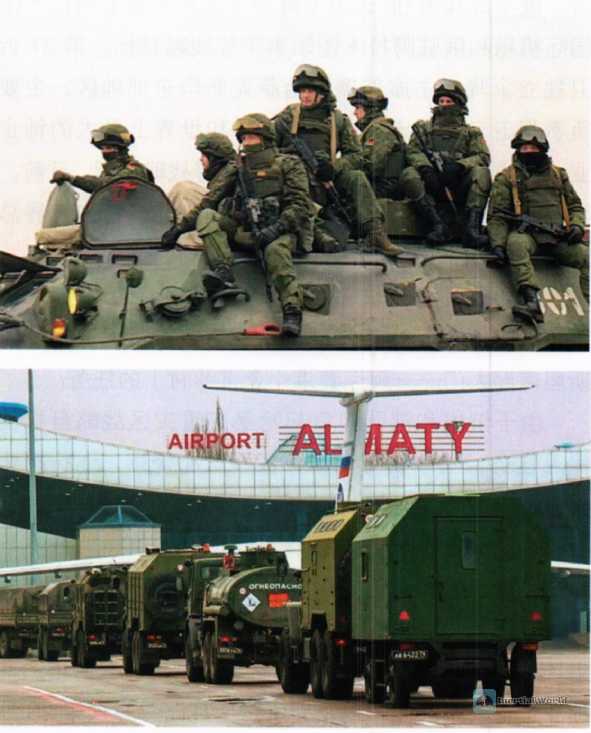
Russian peacekeeping forces stationed at Almaty International Airport
Combat use
Russian peacekeeping forces mainly undertake the following combat tasks. The first is to protect important strategic targets in Kazakhstan’s cities. From January 6 to 7, 2022, the Russian airborne troops quickly completed the task of sending peacekeeping forces to Kazakhstan. As of the evening of January 7, Russian peacekeeping forces have opened several "safe corridors" in the air and on the ground in Kazakhstan, and controlled important strategic targets in the areas hit hard by terrorist attacks in Kazakhstan. Among them, the Almaty International Airport, which was once out of control, was first controlled by Russian peacekeeping forces.
According to the order of Lieutenant General Andrei Serdyukov, the commander of the Russian Airborne Forces, the 45th Independent Special Brigade of the Russian Airborne Forces is mainly responsible for defending the strategic targets of Aling, the capital of Kazakhstan, Stana International Airport, the General Staff of the Kazakh Army, the National Television Station, the Presidential Palace, the Kazakh Air Defense Force Command, the National Bank and the National Security Committee, and the 602nd Air Base of the Kazakh Air Force in Chimkent. The 98th Guards Airborne Division of the Russian Airborne Forces is mainly responsible for defending strategic targets such as Almaty International Airport and the Russian Consulate in Almaty. The 31st Guards Independent Parachute Assault Brigade is deployed in the eastern region of Kazakhstan, mainly responsible for defending the city of Ust-Kamengorsk and the world’s largest uranium enterprise-Kazakhstan Atomic Energy Industry Corporation and other strategic targets. Currently, Kazakhstan is the world’s largest uranium producer, accounting for 42% of the world’s total production.
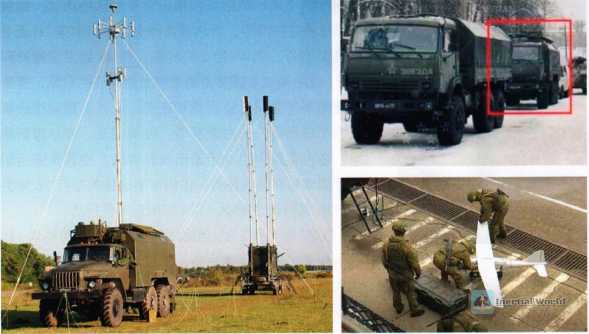
In addition, according to Russian unofficial media reports, the 414th Guards Independent Marine Corps of the Russian Navy’s Caspian Sea Fleet is mainly responsible for defending the southern gate of Kazakhstan-Aktau Port (Shevchenko).
Since the Russian peacekeeping force is responsible for the protection of strategic targets in Kazakhstan’s terrorist-hit areas, the Kazakh regime can mobilize more troops and police to carry out combat missions against terrorist organizations.
The second is to protect Russia’s military bases in Kazakhstan.
According to the agreement reached between Russia and Kazakhstan, Russia has deployed a large number of military bases in Kazakhstan, including the Russian State Fifth Spacecraft Launch Site in Baikonur, the 10th Missile Research and Test Range in Saryshagan, the Kastanay Independent Transport Aviation Regiment, and the 20th Independent Measurement Station of the New Kazanka Strategic Missile Force.
On the afternoon of January 6, 2022, a special company of the 76th Guards Airborne Assault Division and a special battalion of the 45th Independent Special Brigade flew to the Kostonaya Military Airport in northern Kazakhstan (6 kilometers from the Baikonur Spacecraft Launch Site) to strengthen the protection of the above-mentioned military bases. At the same time, the 2nd and 4th Special Brigades of the Russian Central Military District and the 55th Mountain Combat Battalion of the 55th Mountain Combat Brigade are on standby.
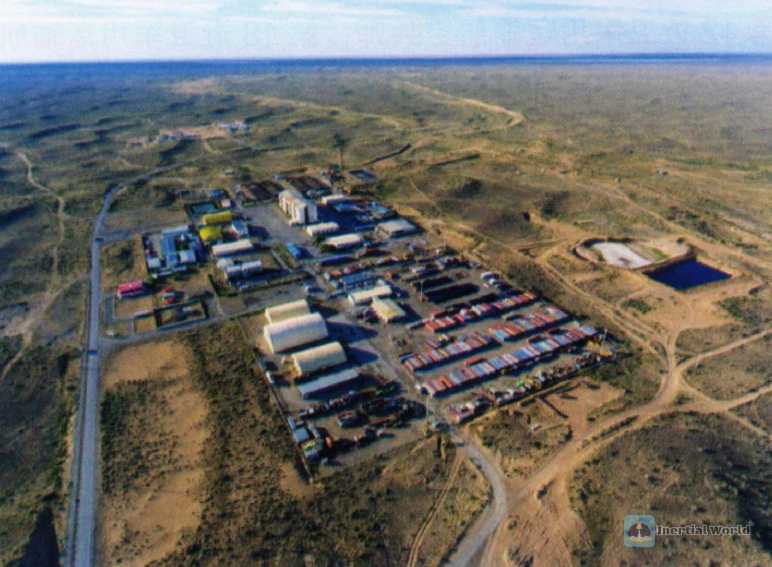
Third, electronic suppression and interference is carried out on terrorist organizations. The Russian peacekeeping force is also responsible for assisting the Kazakh army in clearing out terrorists. According to the Russian Aviation Industry website, with the cooperation of the Russian peacekeeping force’s R-330ZH "Resident" and RB-341V "Rigging" 3 electronic warfare equipment, the Kazakh army eliminated hundreds of rioters who occupied Almaty International Airport.
R-330ZH "Resident" electronic warfare equipment, mainly composed of 1 "Dibazha" interference equipment, 4 electronic warfare personnel. Working frequency band: reconnaissance frequency band 10~2 000 MHz; interference frequency band 800~960, 1227.6, 1575.42, 1 500~1 700, 1 700~1 900 MHz. The interference methods are divided into targeted interference, targeted blocking interference and blocking interference. The effective suppression distance on the ground is 20~25 kilometers, and the effective suppression distance in the air is not less than 50 kilometers. It can be powered by industrial network, diesel engine or battery. The deployment time of the entire electronic warfare equipment does not exceed 40 minutes.
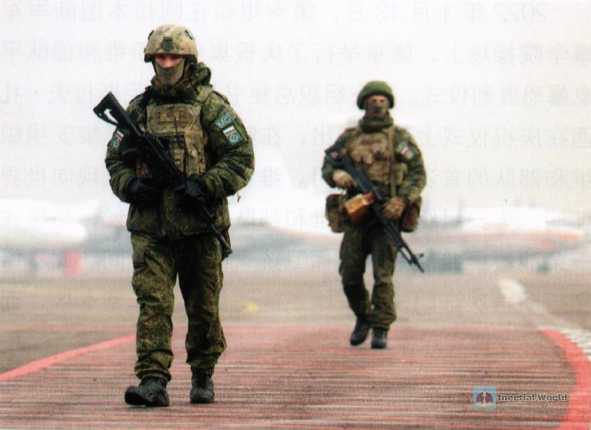
The "Resident" electronic warfare equipment mainly has the following performances: First, it can automatically discover, locate and analyze the signal source of the working frequency band. Second, it can implement radio suppression on portable maritime satellite and Iridium satellite communication systems and mobile ground stations, NAVSTAR global satellite positioning system users and GSM-900/1800 mobile phone users. Third, it can automatically exchange information with the same electronic warfare equipment to ensure the synchronous measurement of the emission source and calculation of its coordinates. It can also exchange information with the base control station to obtain combat missions. Fourth, the map coordinates of the detected radio radiation source are displayed on the background of the electronic map or in a rectangular grid. The main disadvantage of this electronic warfare equipment is that within the effective suppression range, it not only paralyzes the enemy’s communications, but also interferes with our own communications. Therefore, when the "Resident" electronic warfare equipment is working, our own side should switch to optical fiber cable communication mode. It should be pointed out that this electronic warfare equipment has been tested in actual combat on the Syrian battlefield and has been highly praised by Russian officers and soldiers.
RB-341V "Sling" 3 electronic warfare equipment, composed of 1 Kamaz military transport truck (ground control station) and 2~3 "Sea Eagle" 10 unmanned reconnaissance aircraft. "Sea Eagle" 10 has a take-off weight of 18 kg, a range of 600 km, a flight speed of 90~150 km/h, an actual ceiling of 5000 km, a payload of 5 kg, and a maximum endurance of 18 hours. The drone can carry 3~4 types of equipment at the same time, and is equipped with a same-frequency encrypted digital communication transmission control system and encoder. 1 ground control station can control 2~3 drones at the same time. In addition, the drone can also play the role of a relay communication station
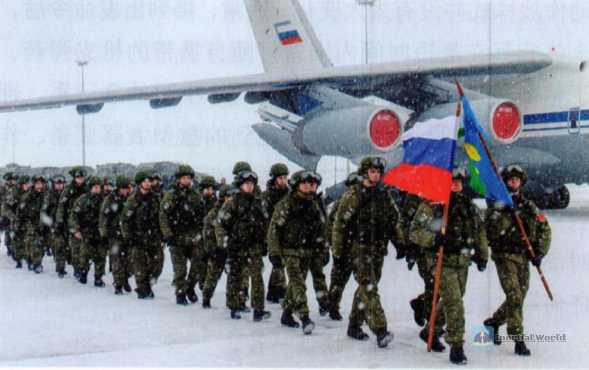
Fourth, Russian citizens stranded in Kazakhstan will be safely transported back home.
Due to the paralysis of international airports such as Almaty, Russian citizens traveling in Kazakhstan cannot return home as scheduled, and their personal safety is threatened. Therefore, in addition to defending important strategic targets in Kazakhstan, the Russian peacekeeping force also undertakes the task of transporting Russian citizens stranded in Kazakhstan back home. As of January 10, the Russian Military Transport Aviation Il-76MD and An-124 military transport aircraft have safely transported a total of 1,461 Russian citizens back home.

Operational characteristics
Russian peacekeeping forces mainly show the following operational characteristics.
First, they acted boldly and responded quickly.
At the beginning of the new year of 2022, protests against the government’s doubling of liquefied gas prices took place in the western cities of Zhanaojin and Aktau in Kazakhstan. On January 4-5, terrorist organizations attacked and burned the city government building in Almaty, and occupied the international airport. Domestic Internet communications and TV signals were also interrupted. In response, Kazakh President Tokayev signed a presidential decree declaring a state of emergency in the country.
On the morning of January 6, 2022, Tokayev asked the CSTO for help. According to the decision of the Collective Security Council of the CSTO to help Kazakhstan quell violent terrorism, the Russian General Staff quickly dispatched the 98th Guards Airborne Division Peacekeeping Battalion from Moscow’s North Ivanovo Military Airport, boarded an IL-76 military transport aircraft, and landed at Kazakhstan’s Almaty International Airport in just a few hours on the afternoon of January 6 (Moscow is about 3,500 kilometers away from Almaty), and began to carry out peacekeeping missions. The lightning-fast arrival of the Russian peacekeeping force at Almaty International Airport not only reassured the Kazakh regime and local residents in distress, but also shattered the dreams of domestic and foreign terrorist forces to overthrow the Kazakh regime. Before January 7, all Russian peacekeeping forces arrived and were deployed in terrorist cities and regions in Kazakhstan.
Former US Ambassador to Russia Michael McFaul was shocked by the lightning-fast appearance of the Russian peacekeeping force at Almaty International Airport. Czech Foreign Minister Jan Lipavsky pointed out on Czech National Television that the most impressive thing was the lightning-fast appearance of the Russian military transport aircraft carrying paratroopers at Almaty International Airport. Previously, Russian airborne troops had a glorious history of rapid parachuting in other parts of the world. It should be said that the Russian military’s combat readiness and combat capabilities are at the world’s first-class level.
Dimitri, a netizen who served in the 45th Reconnaissance Regiment of the Soviet Airborne Forces (the predecessor of the 45th Special Brigade), wrote on the Russian ZEN.YANDEX website that despite retiring for more than 20 years, the 45th Special Brigade’s rapid airborne operations have not changed much.
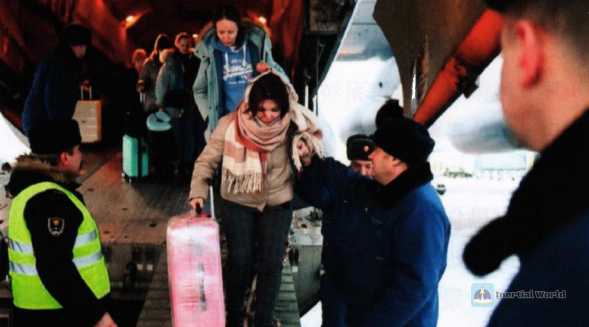
The action combat style has not changed much. Usually, after receiving the departure order, all officers and soldiers prepare the guns, ammunition and dry food they carry with them in the shortest time and gather at the permanent location. After about an hour of rapid march, the troops arrived at the military airport and boarded the plane. The heavy weapons and equipment, combat command vehicles and military cooking vehicles that arrived later were also loaded into the cabin. From the permanent location to the military airport, and then to the plane sliding into the runway for takeoff, the entire departure preparation time is less than 2 hours. Such a rapid response capability is unmatched by any army in the world.
Secondly, close cooperation and coordination.
The Russian peacekeeping force composed of Russian airborne troops and Russian military transport aviation has demonstrated close cooperation and coordinated overall combat capabilities, which has impressed the world.
According to the Russian Military Review Network, from January 6 to 7, 2022, the Russian Military Transport Aviation Il-76 series and An-124 military transport aircraft dispatched a total of 108 sorties, transporting 2,030 peacekeepers and 250 weapons and equipment to Kazakhstan. The entire flight time exceeded 1,000 hours, which not only demonstrated the superb strategic delivery capabilities of the Russian Military Transport Aviation, but also demonstrated the ability of the Russian Military Transport Aviation to work closely with the airborne troops.
Russian military expert Kirill Lyabov pointed out that at present, the most concerning issue for the Russian airborne troops is the coordinated operations with the Russian military transport aviation. It should be admitted that although the Russian military transport aviation has a large number of military transport aircraft, these transport aircraft cannot all be used to transport and airdrop airborne troops, and they also have to undertake other combat missions, so it is very likely to affect the formulation of coordinated combat plans. However, whether it is the military exercises in recent years or the combat operations to quell violent terrorism in Kazakhstan, the Russian airborne troops and the military transport aviation have not encountered any obstacles in combat coordination.
Finally, it is highly targeted and effective.
This time, the quelling of violent terrorism in Kazakhstan is the largest-scale peacekeeping operation carried out by the Russian peacekeeping force abroad in the name of the CSTO specifically targeting violent terrorism in Kazakhstan.
Russian military expert Dmitry Litovkin wrote in the Russian Independent Military Review that due to the deterioration of the domestic situation in Afghanistan caused by the withdrawal of US troops from Afghanistan on May 1, 2021, the Russian peacekeeping force will strengthen military cooperation with the peacekeeping forces of the CSTO member states in Central Asia in the second half of 2021 to respond to sudden violent terrorist incidents in Central Asia at any time.
From October to November 2021, the Russian peacekeeping force participated in the CSTO joint exercises three times. Compared with previous years, both the number and intensity of exercises have been greatly improved. The exercise subjects mainly include eliminating terrorists in occupied settlements, rescuing hostages, urban street fighting, airdropping special forces, escorting CSTO peacekeeping forces, air defense operations and three-defense operations on the move, mine clearance, electronic suppression of drones and aircraft, escorting humanitarian aid convoys and building refugee camps, etc.
Litovkin stressed that based on the targeted strengthening of anti-terrorist exercises, the Russian peacekeeping force successfully completed peacekeeping tasks such as protecting important strategic targets in Kazakhstan, implementing electronic suppression and interference on terrorist organizations, and transporting Russian citizens back home.
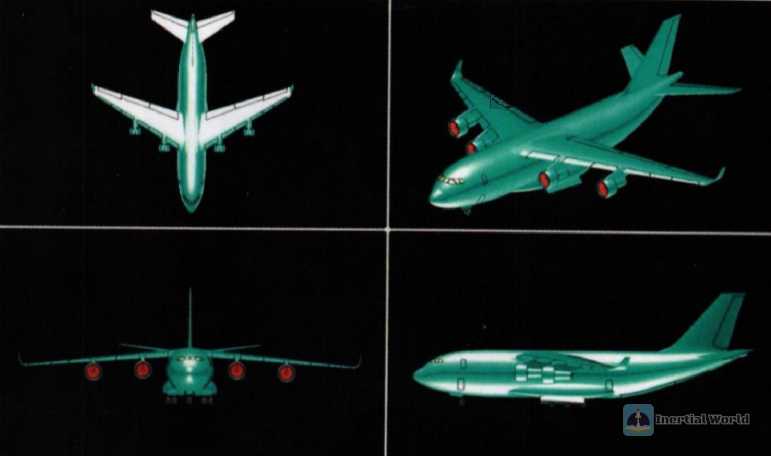
Main impact
The successful completion of the peacekeeping mission in Kazakhstan by the Russian peacekeeping force will have the following positive impacts.
First, it will revitalize the outside world’s hope for the CSTO.
On January 13, 2022, the CSTO held a grand ceremony to celebrate the victory of the CSTO peacekeeping force in quelling terrorism on the playground of the Almaty Army Military Academy. CSTO General Secretary Stanislav Zasi emphasized at the celebration ceremony that the peacekeeping operation in Kazakhstan was the first actual combat use of the CSTO peacekeeping force. The performance of the peacekeepers has proved to the world that the peacekeeping forces of the CSTO member states will fight side by side in a trench at any time to defend a unified security space. This peacekeeping operation has once again proved that the defense capabilities of the CSTO are very effective and can play a practical role.
As we all know, according to the CSTO Treaty signed on May 15, 1992, the CSTO became a military and political alliance participated by countries in East Asia, Central Asia and Europe. At present, the member states of the organization are Russia, Belarus, Kazakhstan, Armenia, Tajikistan and Kyrgyzstan. Russia’s original intention of actively advocating the establishment of the organization was to establish a military alliance that could compete with NATO after the end of the Cold War. Although it has been established for nearly 30 years, the status, role and influence of the CSTO are not only incomparable to NATO, but are also getting worse. What surprised the outside world was that the CSTO’s performance in dealing with the riots in Kyrgyzstan in June 2010, the Belarusian color revolution in August 2020, and Armenia’s defeat in the Nagorno-Karabakh war in September 2020 was disappointing.
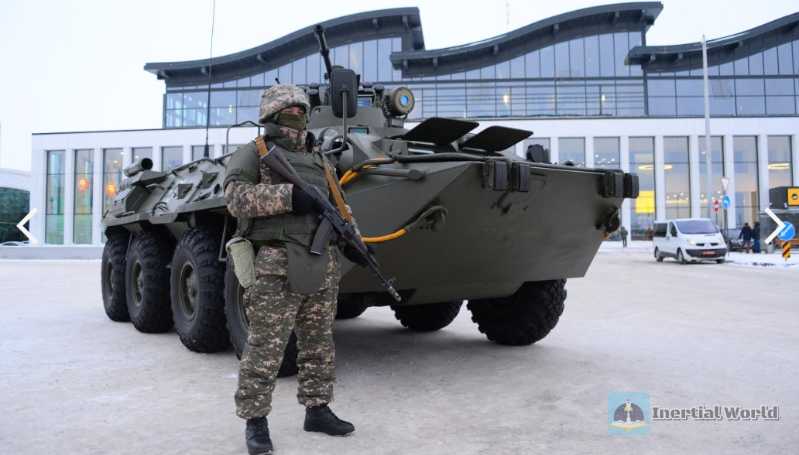
Russian military expert Vladislav Shurykin pointed out that the quelling of violent terrorism proved that the CSTO was not a fiction as opponents claimed, but a highly efficient collective security guarantee organization. This was the first actual combat test of the CSTO, not a daily exercise. In a few days, the CSTO, led by Russia, quickly deployed peacekeeping forces to where they were needed. This was not only an organizational victory, but also a political victory. Obviously, the Russian airborne troops played a leading role. This peacekeeping victory has revived the world’s hope for the CSTO.
Second, ensure the geopolitical stability of Russia’s backyard.
Russia and Kazakhstan have a border of more than 7,500 kilometers. Kazakhstan is both Russia’s backyard and the cornerstone of Russia’s stability in Central Asia. Based on the "borderless" good-neighborly relationship jointly forged by Russian President Putin and former Kazakh President Nazarbayev, no defense facilities have been built on the Russian-Kazakhstan border, and local residents can freely enter and exit the border of both sides. Kazakhstan’s Petropavlovsk Oblast borders Russia’s Kurgan and Omsk in Siberia. Russia’s Astrakhan-Moscow Railway, which passes through Kazakhstan, has become an important strategic channel to drive the economic development of the region. From Kazakhstan, it is easy to enter the Russian industrial center-Ural, Astrakhan and Barnaul in the middle and lower reaches of the Volgar River. It can be seen that Kazakhstan’s geopolitical stability is vital to Russia. If Kazakhstan is lost, Russia will lose control of the entire Central Asian region.
There is a saying circulating among the people in Russia and Kazakhstan today: Only fences can "isolate" Chechnya, which makes people worry. In order to mediate relations with Chechnya, Russia has to spend a large amount of national budget on it every year. It can be seen that the good neighborly and friendly relations between Russia and Kazakhstan are hard-won, and Putin will never let Kazakhstan become a sword that will make Russia vulnerable to attacks from all sides.
Russian independent military commentator Alexander Khramtsikhin published a commentary entitled "Has Brother Kazakhstan been saved?" in the Russian Independent Military Review, pointing out that for many years, Russia has been paying close attention to the developments in Belarus and Ukraine and their western borders. In fact, for Russia, the geopolitical importance of Kazakhstan is far greater than that of Ukraine and Belarus. Kazakhstan is located in the center of Eurasia, adjacent to Afghanistan and other potentially unstable regions. The timely attack of the Russian peacekeeping force not only ensures the political and geopolitical stability of Russia’s backyard, but also ensures the safety of Russia’s military bases in Kazakhstan.
Conclusion
In the Afghan war 30 years ago, when the Soviet Union sent an airborne assault division with a combat formation of 5,000 people to Afghanistan, it used 50 Il-76, 40 An-22 and more than 100 An-12 military transport aircraft. Today, Russia sent more than 2,000 paratroopers to Kazakhstan, using 75 Il-76 series and 5 An-124 military transport aircraft. The difference between the two is not the number of personnel sent, but the age of weapons and equipment. 30 years have passed, and the Russian airborne troops are still using "old horses". New military transport aircraft such as Il-112V and Il-114 have been delayed in being equipped due to engine bottlenecks and other problems, and the advent of the new generation of super-heavy military transport aircraft Il-106 PAKTA (Advanced Aviation System of Transport Aviation) is also far away. In this regard, Russian military experts called on Putin to speed up the development and deployment of new military transport aircraft, otherwise it will always be a potential bottleneck.




